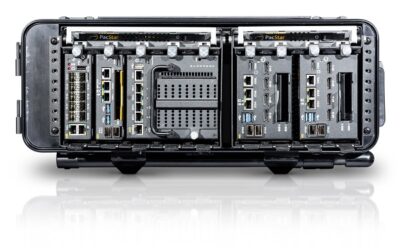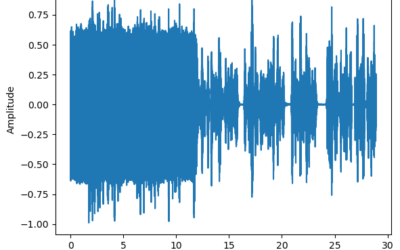Shipbuilding Mega-Merger Looms Over Australian Frigate Decision
According to industry sources, the final decision for SEA 5000, Australia’s Future Frigates project, should be announced in the coming couple of months, perhaps even late-May. With the Department of Defence having passed on its recommendation to the National Security Committee, it is now crunch time to deliver the third high-profile defence decision for the Royal Australian Navy (RAN) after the selection of Naval Group (then DCNS) for the Future Submarines (SEA 1000) in April 2016, and the selection of Lürssen for the Offshore Patrol Vessels (SEA 1180) in January 2018. As we draw nearer to the final decision, the mega-merger of European shipbuilders, Naval Group and Fincantieri, appears to have been overlooked so far and sources tell MONCh it is crucial to consider it now.
The Government Second Pass Approval of SEA 5000 looked at three contenders: BAE Systems, with its Global Combat Ship Australia (GCS-A) based on the Royal Navy’s (RN) Type 26; Navantia’s F-5000, based on the ‘Hobart’ class DDG; and, Fincantieri with the FREMM-A, referenced from the Italian ‘Bergamini’ class Frégate Multi-Mission (FREMM). Much has been written as to what would be the most appropriate design to fulfil the RAN’s needs, including a comprehensive article on the proposed (and absolutely crucial) anti-submarine warfare (ASW) capabilities of each proposed design (http://www.australiandefence.com.au/sea/special-report-sea-5000-and-asw-capability-making-sense-of-a-complex-picture). However, one key determining factor appears to be missing: the fast approaching merger of Fincantieri and Naval Group.
Indeed, over the past year, specialised media across Europe have been reporting on the proposed merger of the two of the biggest shipbuilding companies on the continent. The press release from the French Ministry of Defence reads: “This alliance will allow the construction of a solid industrial and commercial project between the two groups. This will be achieved through the joint design and construction of surface vessels… This alliance will also enable the two companies to present a united front for military exports on heavy armed surface ships, based on a coordinated product policy and benefitting from both companies’ international locations.” The merger of Naval Group and Fincantieri is said to result in a ’naval Airbus’, and is seen in Europe as an opportunity to reinforce the European defence industry by favouring cooperation and complementarity rather than competition between companies offering similar products.
At a meeting in Rome in February between French and Italian Ministers of the Armed Forces and Ministers of Economy and Finances, as well as the CEOs of both groups, the parties agreed to deliver a roadmap for the merger by June 2018. If all proceeds according to plan, the merger should be finalised by summer 2019.
However, while this merger appears to be a positive step for Europe’s development of a cohesive and competitive defence industry, it may nevertheless cast a dark cloud over Fincantieri’s chances to win this bid despite the FREMM’s many attributes. The SEA 5000 contract is worth AUS$35billion and the SEA 1000 contract value is AUS$50billion; if the Australian government were to choose Fincantieri for SEA 5000 and, a year later, Fincantieri merged with Naval Group, Defence would have a total of AUS$85billion locked into one company. This is a risk the Australian government may not be willing to take for a number of reasons.
Fincantieri has yet to establish a presence in Australia. Of course, since the company’s down-selection in April 2016 it has been working hard at establishing new ties with the Australian industry and state governments. However, a couple of years of industry days and partnership agreements hardly compare with the years of experience Navantia Australia has accumulated working on the Air Warfare Destroyer programme, nor does it compete with the well-established presence of BAE Systems Australia.
One could argue that the merger of Fincantieri with Naval Group would serve precisely this purpose: leveraging Naval Group’s progressive establishment in Australia through the SEA 1000 programme. The caveats to this plan are the cultural issues Naval Group is currently experiencing with the management of the programme. As reported in another post (https://monch.com/mpg/news/maritime/3141-aussiesub1.html), while the programme is proceeding at pace, tensions between Australian parties involved in the project and François Romanet, President Australasia Naval Group, risk potentially marring the reputation of Naval Group in the country.
The Australian government’s concerns regarding the possibility of locking too much money into one company already emerged when the down-selection for SEA 5000 was announced on 18 April 2016. At the time, Naval Group was notified that it had not succeeded in getting Government First Pass Approval for the Future Frigates, only to find out a few days later, on 26 April, that it had been selected as the contractor for the construction of the 12 Future Submarines. It is highly likely that Defence already knew then the outcome of both projects and did not wish to down-select Naval Group when it was already awarding its biggest defence contract in decades.
Turning back to the two other competitors in the programme, industry sources have been saying that Navantia was out of the competition. MONCh sought Navantia’s comments on the matter while at Sea Air Space, in Washington, and Donato Martinez, Managing Director Navantia Australia, commented: “We have not heard anything about this, it is likely just a rumour.” The upcoming final announcement will ultimately lift the veil on whether this was indeed a rumour or not, nevertheless a number of sources in Australia appear to point in this direction.
BAE Systems Australia, on the other hand, appears well positioned to win this race. According to another source MONCh spoke to, the choice of the GCS-A would be a good fit for Australia primarily because, while the first RN ship of the class, HMS Glasgow, is still under construction, its design is considered by many to be more modern and therefore even more adaptable to the new threats Australia is facing compared to the other two competitors’. Moreover, BAE Systems’ virtual reality tool, which allows members of the prospective navy to virtually tour the ship and actively contribute to the design of its living space, might well help tipping the balance in their favour. Finally, MONCh’s source also indicated that if Canada chose to base its future Canadian Surface Combatant (CSC) on the Type 26 as well, it would bring the number of Commonwealth nations owning such ship to three, thus facilitating experience sharing and interoperability (a point also raised by British High Commissioner Menna Rawlings during her meeting with Shadow Defence Minister Richard Marles). Although that decision is well far down the line, it is possible advantage worth considering, especially considering that the Commonwealth Heads of Government Meeting just took place in London this month.
Ultimately, although scores of articles have been published on the merits and drawbacks of each of the proposed vessels, what will eventually determine the final decision for the Future Frigates contractor may well pertain to the political realm as much as it will to the operational one.
Indeed, in a speech to the National Press Club, Shadow Defence Minister Marles has lamented the fact that for all the talks of sovereignty in Australian shipbuilding programmes, the choice of German Lürssen for the OPVs of SEA 1180 means that “there will be no Australian, or even part Australian, design of the next OPV which could have been the foundation for the development of an Australian vessel which could be sold to the world.” And while the government tried to mitigate this by requesting that some of Austal’s workforce be used in the building of the Lürssen design, the intervention resembled more that of a forced ‘shotgun wedding’, with both parties finding it difficult to agree terms given that they are competitors internationally.
Similarly, Rex Patrick has announced in a media release that Centre Alliance will introduce a Bill into Senate “that will inject the concept of sovereignty back into Australia’s purported ‘sovereign’ National Shipbuilding programme.” The Bill aims to amend the Defence Act 1903 to require “all naval vessels to be built in Australia, except in times of emergency or war… [and] responsibility for any vessels built in Australia to be assigned to a well-established, high performance Australian controlled shipbuilder.” This is no doubt in part a reaction to Patrick’s on going criticism of the SEA 1000 programme, which he considers to be ‘French controlled’ and for which no Strategic Partnering Agreement (SPA) has yet been signed although it has been in negotiations since November 2017. If the Bill passes, Patrick indicated that it will have effect on the SEA 1000 programme and, consequently, on the rest of the decisions for the SPA, which is due to be finalised mid-2018. It will also impact SEA 5000.
In such context, the Australian government would find it quite difficult to defend a decision to select Fincantieri, a company that will merge in a little over a year with another company that is already carrying out its largest shipbuilding contract; a total of AUS$85billion locked into one foreign company at a time where politicians are arguing for more sovereignty in shipbuilding programmes would be a risky move. If the rumours about Navantia are true, then it is likely that the announcement to be made shortly may not come as a surprise after all, favouring BAE Systems over the two other competitors.
AV
























